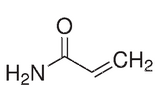
Acrylamide for protein electrophoresis
Resultados de su búsqueda : 617 Producto encontrado
Refine su búsqueda :
RUO
CE/IVD
NEW
- Unconjugated 4
- Biochemicals
Referencia
Descripción
Cond.
Precio Sin IVA
‹
›

